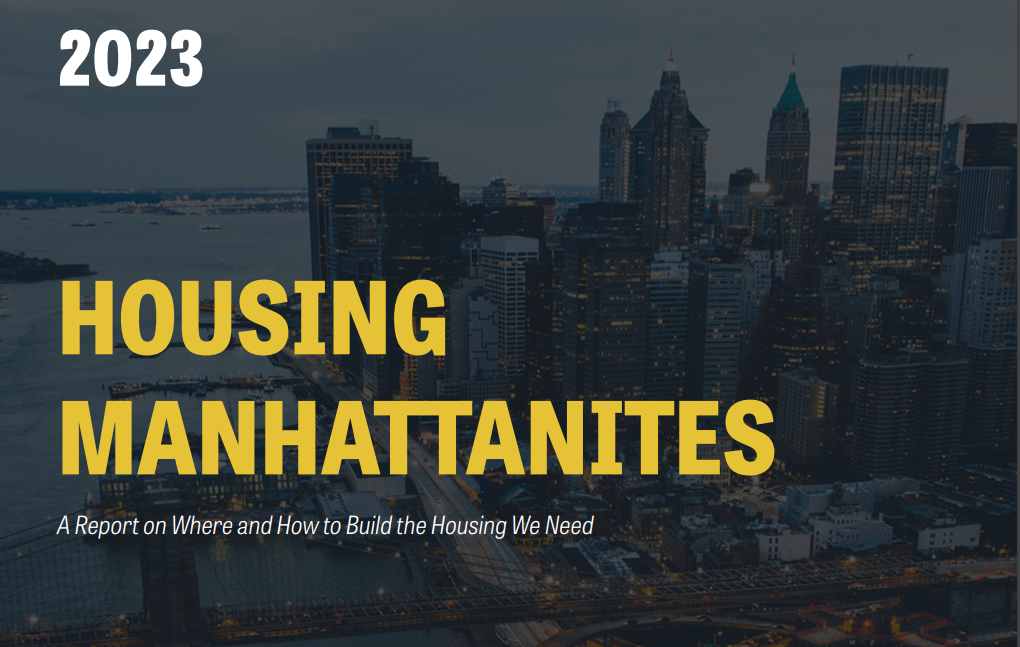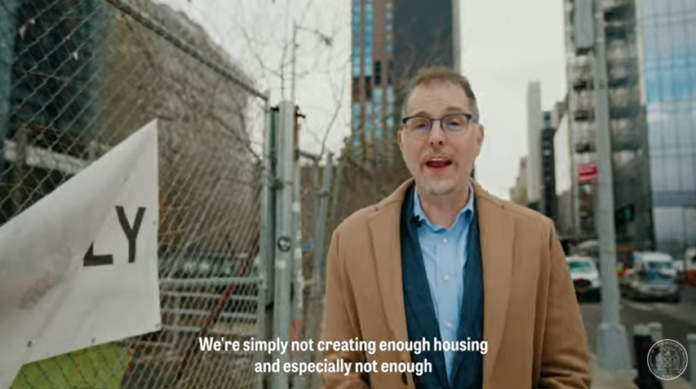New York Construction Report staff writer
Manhattan Borough President Mark Levine is calling attention to the city’s worsening housing crisis and drop in building starts.
The borough of Manhattan approved no new units of housing last month and just 10 buildings were approved in the other four boroughs combined – just 279 units.
“This should be considered a crisis. We have to fix this,” Levine wrote on Twitter Aug. 7. “Lack of housing creation this summer in NYC is not seasonal. Look at the trend.”
Levine shared stats to back up his concern, referring to Housing Manhattanites, Where and How to Build the Housing We Need, a report released earlier this year.
 Citywide 3,525 new units were approved in July 2013 – 1,208 in Manhattan. In July 2022, 527 were approved citywide – 215 in Manhattan.
Citywide 3,525 new units were approved in July 2013 – 1,208 in Manhattan. In July 2022, 527 were approved citywide – 215 in Manhattan.
“There are many, many locations in Manhattan were we can and should build housing, especially affordable housing,” Levine said, highlighting a plan that identifies 171 site.
The average cost to rent a market-rate apartment in Manhattan has topped $5,100, the report states.
“It’s not only low-income families who are getting priced out of our borough, but nurses, bus drivers, and teachers as well. Young people who’ve grown up in Manhattan increasingly feel that finding an apartment of their own here one day will be an impossible dream,” Levine said.
The need for housing—especially affordable housing—is intense and growing, in part due to the significant drop in housing production in Manhattan in recent years. Since 2017, an average of 6,000 new units were built per year, only 21% of which were affordable.
To speed up housing construction, the office of the Manhattan Borough President will implement a new policy reducing the ULURP review period from 30 days to five days.
“We will apply this standard to land use actions at any site listed in this report,” Levine said. “We will also offer expedited approval for any site that should emerge in the future that meets a 100 per cent affordability threshold.”
Levine’s report identifies e identify 171 potential building locations in Manhattan on a mix of publicly and privately owned sites. They include vacant lots, empty buildings, outdated facilities, surface parking lots, and sites with single-story retail that could be converted to mixed-use buildings with housing above.
There is also a call for nine neighborhood rezonings to open the door for more housing and/or allow greater residential use in areas previously restricted to manufacturing or commercial development.
“Building housing on this scale will lead to the creation of thousands of jobs in construction and building service professions,” Levine states in the report. “We strongly support the principle that those jobs should have strong pay, benefits, and worker protections, with strict enforcement of prevailing wage standards.
“We also believe that the unique strengths of nonprofit, community development corporations, and other community-based organizations should be acknowledged in the NYC Department of Housing Preservation and Development’s developer selection process.”
Office conversions are also suggested as a significant opportunity to convert older commercial buildings to housing.
“However, it is not yet clear what State and City policies will be implemented to facilitate these conversions, and it is too soon to identify which specific buildings are likely to be converted.”
Proposals will require action by a wide variety of stakeholders: Community Boards, city council, the planning commision, city and state agencies and property owners.










